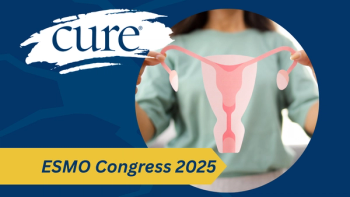
Standard Screening Practices May Highlight Disparities in Endometrial Cancer
Transvaginal ultrasonography may inaccurately measure uterine lining in Black women, highlighting the potential to assess its use on a case-by-case basis.
Assessing uterine lining thickness with transvaginal ultrasonography may miss approximately five times more cases of endometrial cancer in Black women compared with White women.
“This startling difference is due to the higher prevalence of fibroids and non-endometrioid histology type (of endometrial cancer) among Black women, both of which decrease the accuracy of the (transvaginal ultrasonography) strategy,” Dr. Kemi M. Doll, associate professor of obstetrics and gynecology at University of Washington School of Medicine in Seattle and lead author of the study published in JAMA Oncology, told CURE®.
Doll added that these findings may exacerbate racial disparities related to endometrial cancer.
“This puts Black women at a higher risk of false negative results, which is unacceptable in a group that already is most vulnerable to the worst outcomes in (endometrial cancer),” she said. “A false negative result could easily lead to delays in diagnosis and treatment, allowing more time for cancer growth and spread, ultimately making surviving an endometrial cancer diagnosis much less likely.”
After diagnosis, Black women with endometrial cancer have a 90% higher five-year mortality risk compared with White women in the United States.
“This is a long-standing disparity that we have yet to make meaningful progress to address,” Doll said. “Although we have focused before on evaluating access to care — whether and how Black women receive guideline-adherent care — in this study, we sought to evaluate the guidelines themselves.”
In particular, Doll and her team evaluated how transvaginal ultrasonography as a standard of care for endometrial cancer screening performs in Black women compared with White women. Doll explained that the clinical care pathway that is often followed after transvaginal ultrasonography is to perform a biopsy for endometrial cancer if the thickness of the uterine lining is at least 4 millimeters.
“Not all endometrial cancers increase endometrial thickness, and uterine fibroids can make the (uterine lining) harder to measure,” she added.
In this study, researchers simulated a group of patients using data from a national cancer registry, published estimates and the U.S. census, all of which contained information on the performance of transvaginal ultrasonography, information on fibroids and different types of endometrial cancer. This simulated group of patients consisted of 367,073 women (12% Black) with postmenopausal bleeding, of who 36,708 were diagnosed with endometrial cancer.
Using the current recommended threshold of uterine lining thickness — 4 millimeters or greater — led to a biopsy in 47.5% of Black women compared with 87.9% in White women. A biopsy resulted in an endometrial cancer diagnosis in 13.1% of Black women and 14.6% in White women.
“In both our primary analysis and multiple iterations, where we changed assumptions about fibroid location, (uterine lining) thickness and visibility, and age, we found that the (transvaginal ultrasonography) strategy to discriminate who requires an endometrial biopsy in the setting of post-menopausal bleeding underperforms among Black women,” Doll said.
Findings were similar when researchers adjusted the thresholds to 3 millimeters or more and 5 millimeters or more.
“We caution against immediate practice change, as these results should be confirmed prospectively following screening patients over time and with community engagement as a central component,” Doll concluded. “However, we do urge all clinicians to recognize the potential for missed diagnoses among Black women, especially those with fibroids, and counsel patients on the relative benefit of endometrial biopsy for definitive diagnosis versus relying on the less-invasive (transvaginal ultrasonography) screening.”
For more news on cancer updates, research and education, don’t forget to





